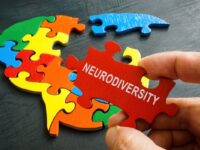I often referred to myself as a small business, turns out I am, although I do fall in the sub category of micro business. The clarification came after learning that some organisations in our Australian autism directory had been knocked back for COVID relief payments for not being registered for GST. Most of these businesses fell into the nano category.
I had always thought the title of small business was just that, a small business. My local shop, the mum and dad business, our local plumber. I had also heard the term “small business” being thrown around to describe multimillion dollar global businesses, it often left me scratching my head. So, why is there confusion?
We actually do not have a consistent definition of small business across government in Australia.
The ABS defines small business as a business that employs less than 20 people and the ATO definition of a small business is one that has a turnover under $10 million.
According to the ABS, The Australian Bureau of Statistics defines a small business as a business employing fewer than 20 people. Categories of small businesses include:
- Non-employing businesses (sole proprietorships and partnerships without employees).
- Micro-businesses (businesses employing between one and four people including non‑employing businesses).
- Other small businesses (businesses that employ between five and 19 employees).
- Nano (business that has earned under $75,000).
Why ensuring the survival of the nano businesses is vital for all Australians
COVID lockdown has been challenging for all businesses. But let’s take a look at why we should not overlook a nano business.
If those businesses owners who are faced with challenges can adapt, they should be able to guarantee themselves to be among the businesses contributing to 41 per cent of the workforce employed by small business between now and 2026.
The Australian Small Business and Family enterprise Ombudsman released a report in Dec 2020. The statistics around those in the small business (ABS definitions) were surprising.
Most businesses are non-employing businesses (e.g, sole traders), which account for 62.8 per cent of all businesses. Micro businesses that employ one to four people account for a further 25.7 per cent of all businesses, while the remainder of the small business category is comprised of businesses that employ five to 19 people, which account for 8.9 per cent of all businesses. Medium and Large businesses account for the remaining 2.6 per cent.
All small business categories employ close to 4.7 million people and equate to approx 41 per cent of the business workforce, making those businesses that employ none to 19 people our biggest employers in Australia.
So, what can we all do to ensure the nano business survives?
What many nano business owners are now realising is being registered for GST is vital even if you earn under $75,000. Something many new businesses have been caught out by. The current Victorian relief package is only eligible to businesses who are registered. It would also be a mistake to think this will be our last snap lockdown.
Now may also be the ideal time to start being creative about a second income stream. Perhaps adding that additional service or adding that online course you have thinking about. Never in our history has there been such an opportunity to fast track our businesses growth. Technology and instant networking opportunities are all there, ripe for the picking even if government assistance is not.
For us at Kids on the Spectrum, our success relies on the success of all businesses in our directory. Without them, our income is reduced along with the loss of important autism resources.
So, we always ask, how can we help?













